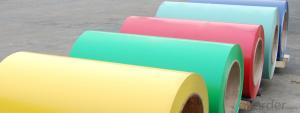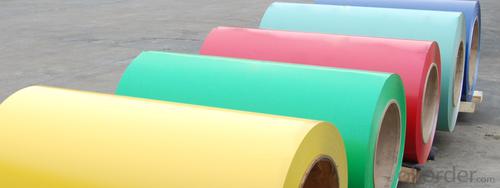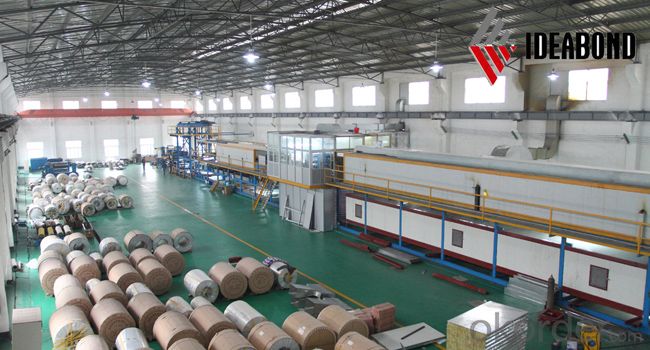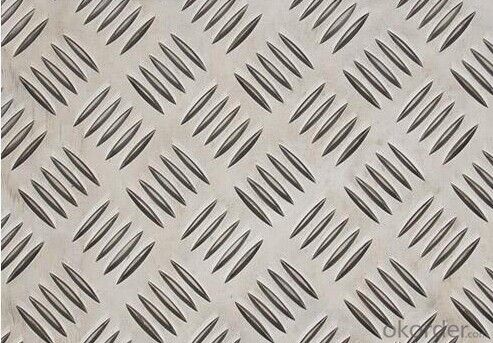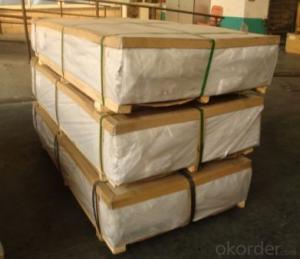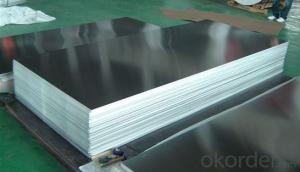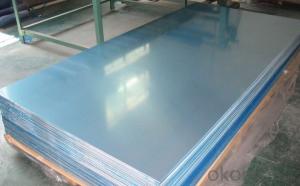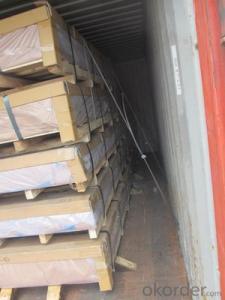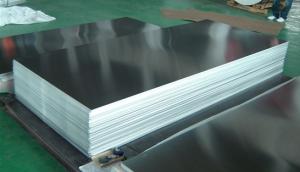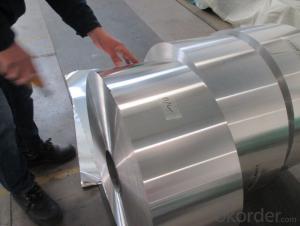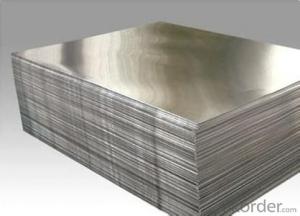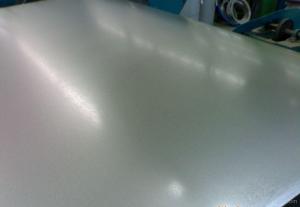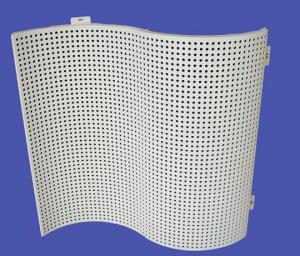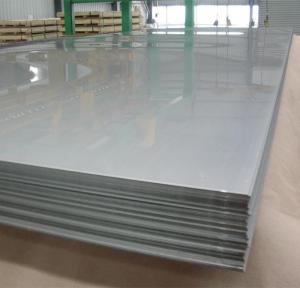Aluminum Alloy Sheets - AA1200, H14, 0.68mm Thickness
- Loading Port:
- Shanghai
- Payment Terms:
- TT OR LC
- Min Order Qty:
- 5 m.t.
- Supply Capability:
- 500000 m.t./month
OKorder Service Pledge
OKorder Financial Service
You Might Also Like
Specification
1.Structure of Aluminum Coils Colored Coated Description
Aluminum coils color coated are of a wide range of colors, which give wonderful appearance no matter in residential and commercial constructions or great exhibition centers.
Aluminum coils color coated have been widely used in the fields of construction and decoration, electronic applications, lighting decoration, air-condition air pipes, sandwich panels and drainages etc.
2.Main Features of the Aluminum Coils Colored Coated
• Superior quality of raw material
• Reasonable and stable chemical composition
• Accurate tolerance
• Goode mechanical property
4.Aluminum Coils Colored Coated SpecificationCharacteristic:
1)Excellent weather-proof durability
2)Anti-ultraviolet
3)High erosion resistance
4)Stable color and gloss
5)Good mechanical processing performance
6)Abrasion resistance
7)Anti-impact
8)High flexibility
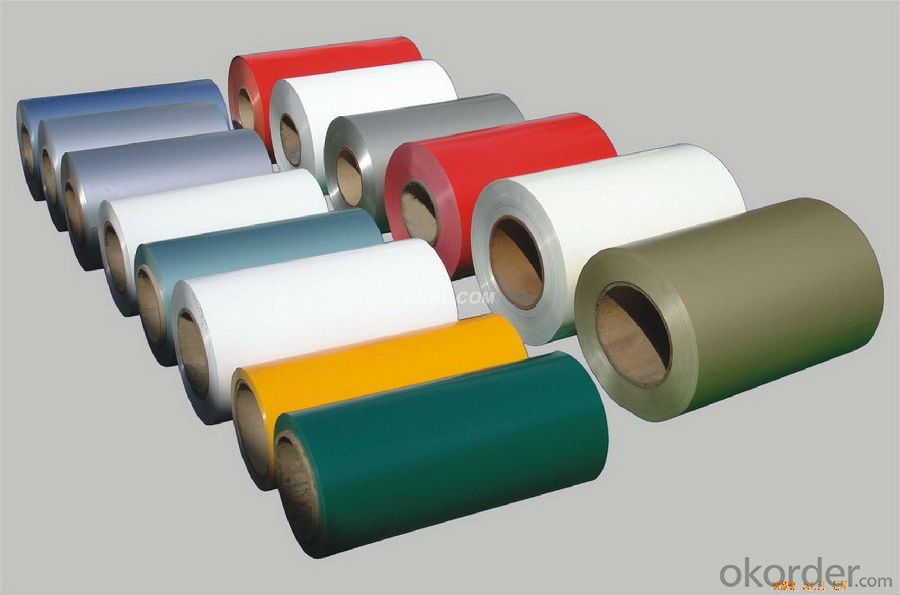
- Q: This question asks for a comparison between aluminum sheets and other types of sheet metal regarding their strength and durability.
- <p>Aluminum sheets are known for their high strength-to-weight ratio, making them lighter than many other sheet metals such as steel. They offer excellent corrosion resistance, which contributes to their durability. However, in terms of sheer strength, aluminum is not as strong as steel or titanium. Steel is stronger but also heavier, and while titanium is very strong and durable, it is also more expensive and less commonly used in construction and manufacturing. Aluminum's malleability allows it to be easily shaped and formed, and it is also non-magnetic and has good thermal conductivity. Overall, aluminum is a popular choice for applications requiring a balance between strength, weight, and resistance to corrosion.</p>
- Q: This question asks for the cost of an aluminum sheet.
- <p>The cost of aluminum sheets can vary significantly based on factors such as thickness, grade, surface finish, and market conditions. As of my last update, the price range for aluminum sheets could be anywhere from $0.50 to $5 per pound, but this is subject to change. For the most accurate and current pricing, it's best to check with suppliers or on metal exchange platforms, as prices can fluctuate daily. Always consider the specific requirements of your project to determine the exact type and grade of aluminum needed, which will also affect the cost.</p>
- Q: I have an aluminum block engine in my wakeboard boat which is built for the lakes, now i live on salt water and was wondering the effect saltwater would have on the engine block as water goes through to cool it.
- Listen to Randall. A heat exchanger is much cheaper than an engine block and heads.
- Q: Can aluminum sheets be used for HVAC ductwork?
- Indeed, HVAC ductwork can utilize aluminum sheets. Owing to its lightweight and corrosion-resistant characteristics, aluminum stands as a favored option for ductwork. Moreover, it proves simple to manipulate and can be molded into diverse configurations and dimensions. Furthermore, aluminum ductwork is renowned for its robustness and extended lifespan. It frequently finds application in both commercial and residential HVAC systems, effectively circulating air within a structure.
- Q: Are aluminum sheets suitable for interior design applications?
- Yes, aluminum sheets are suitable for interior design applications. They are versatile, lightweight, and durable, making them an excellent choice for modern and contemporary design styles. Aluminum sheets can be used for various purposes, such as wall panels, ceilings, backsplashes, furniture, and decorative accents, adding a sleek and sophisticated look to any interior space. Additionally, aluminum is easy to clean and maintain, making it a practical and aesthetically pleasing option for interior design.
- Q: Can the aluminum sheets be used for manufacturing power distribution systems?
- Indeed, power distribution systems can make use of aluminum sheets for their manufacturing needs. The electrical industry widely embraces aluminum as a material of choice due to its exceptional conductivity, lightweight nature, and cost-effectiveness. Notably, busbars, the essential elements within power distribution systems, are commonly crafted using aluminum. This is made possible by the ease with which aluminum sheets can be fabricated and shaped to conform to the desired busbar configuration, thereby enabling efficient transmission and distribution of power. Furthermore, aluminum displays commendable resistance to corrosion, rendering it suitable for outdoor applications. However, it remains crucial to guarantee that the aluminum sheets adhere to the required electrical and mechanical specifications for power distribution systems to ensure both their safety and reliability during operation.
- Q: Are aluminum sheets suitable for chemical processing?
- Yes, aluminum sheets are suitable for chemical processing due to their excellent corrosion resistance, high thermal conductivity, and lightweight properties. They can be effectively used for various chemical applications such as containers, piping, and heat exchangers.
- Q: Can aluminum sheets handle high temperatures?
- Yes, aluminum sheets can handle high temperatures. Aluminum has a high melting point of 660 degrees Celsius (1220 degrees Fahrenheit), making it suitable for many high-temperature applications. Additionally, aluminum has excellent thermal conductivity, which allows it to quickly dissipate heat. This property makes aluminum sheets suitable for use in areas that require high-temperature resistance, such as engine components, heat exchangers, and oven linings. However, it is important to consider the specific alloy and thickness of the aluminum sheet, as different alloys may have varying temperature limits.
- Q: Can aluminum plate protect against radiation?
- First, the installation depends on the way, the direct aluminum plate can not, the aluminum plate must be grounded in order to play a role. The ground is connected with the earth plate, this shot to the electromagnetic wave on the aluminum plate will be aluminum absorption into electrical energy and flow to the ground, if not grounded on the other side will generate an electric field in aluminum, is directly through to the. In fact, grounding is very simple, if the installation of the use of metal screws directly contact the aluminum plate, but also with the cement wall contact, you can be grounded, although not good grounding. If the wall is a wooden board and so on, the insulating material can not, and then there is a screw, if it is used in the wall dug into the plastic sleeve also can not, because the plastic will be insulated.
- Q: Can aluminum sheets be waterjet cut?
- Yes, aluminum sheets can be waterjet cut. Waterjet cutting is a versatile and efficient method that can be used to cut through a wide range of materials, including aluminum.
Send your message to us
Aluminum Alloy Sheets - AA1200, H14, 0.68mm Thickness
- Loading Port:
- Shanghai
- Payment Terms:
- TT OR LC
- Min Order Qty:
- 5 m.t.
- Supply Capability:
- 500000 m.t./month
OKorder Service Pledge
OKorder Financial Service
Similar products
Hot products
Hot Searches
Related keywords
